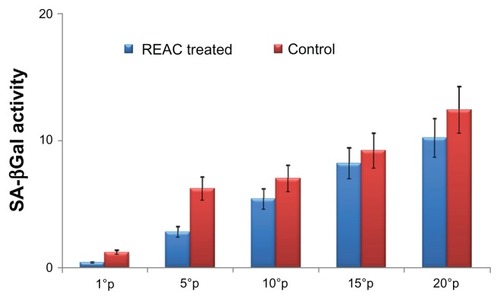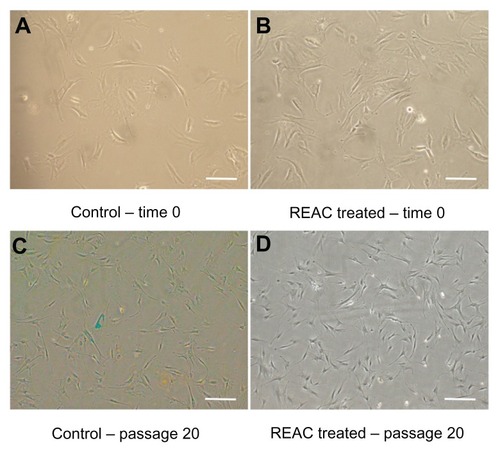Figures & data
Figure 1 Effect of the radioelectric asymmetric conveyor on percentage of senescence-associated β-galactosidase-positive cells.
Notes: Human adipose-derived stem cells at passages 1, 5, 10, 15, and 20 were cultured in 6-well plates at a concentration of 3 × 103 cells per well. Senescence-associated β-galactosidase activity was measured after culturing for 12 hours with (blue line) or without the radioelectric asymmetric conveyor (red line) stimulus. The cells were then photographed under a microscope at 100 × magnification for qualitative detection of senescence-associated β-galactosidase activity. The numbers of positive (blue) and negative cells were counted in five random fields under the microscope (at 200 × magnification and bright field illumination), and the percentage of senescence-associated β-galactosidase-positive cells was calculated as the number of positive cells divided by the total number of cells counted. All the REAC-treated cells were significantly different from the untreated group (mean ± SD, n = 3, P < 0.05).
Abbreviations: REAC, radioelectric asymmetric conveyor; SD, standard deviation.

Figure 2 Senescence-associated β-galactosidase activity.
Abbreviation: REAC, radioelectric asymmetric conveyor.
